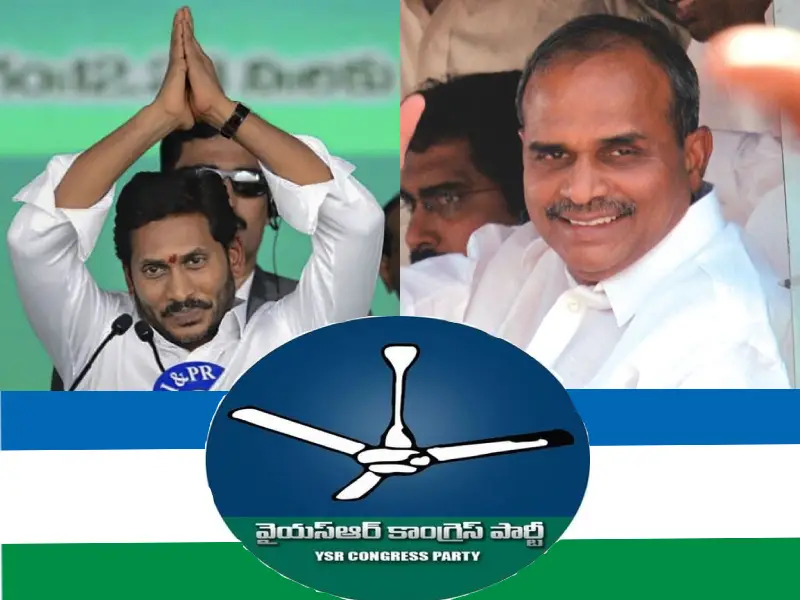YSRC at 10: The journey of India's youngest party
By Jinka Nagaraju
Hyderabad: YSR Congress led by YS Jaganmohan Reddy is just ten-year-old (B.March 12, 2011) but in its short-span, the party has emerged as India’s strongest political party.
By cornering an unusual 151 seats out of 175 in Andhra Pradesh Assembly with 49.95 per cent vote share in 2019 elections, the Yuvajana, Shramika and Rytu Congress Party (YSR Congress) has become the most popular regional party in India.
It’s now the fourth largest party in the Lok Sabha with 22 members. No breakaway group of the Congress has ever had this kind of phenomenal success. Barring a few like AGP JMM which took birth out of regional aspirations, the majority of India’s regional parties in the recent past began their journey as a breakaway faction of a national party.
In its long history, the Congress, India’s grand old party, lost many stalwarts due to differences with the leadership and formed their own parties. They were all short-lived, as they either returned to the parent party's fold or became defunct in due course.
However, during Sonia Gandhi’s era, the Congress suffered irreparable damage from the factions because the breakaway factions of Sarad Pawar, Mamata Banerjee, and YS Jaganmohan Reddy never came back home.
They emerged as the successful regional leaders with their own parties. Among the three, Jaganmohan Reddy stands out as a unique, because unlike in Maharashtra and West Bengal, where the Congress still survives, Andhra Pradesh, Congress disappeared without a trace upon his arrival on the scene.
Reasons for the success of YSRC
Historical context and social background of the protagonist played a crucial role in the success of the YSR Congress. Even though two popular film personalities, incidentally siblings, Chiranjeevi and Pawan Kalyan, tried their luck in politics by forming political parties, they never had been serious politicians and were proven a round peg in a square hole with their part-time politics. There were ill-timed and ill-prepared for the rough and tough ride in politics.
Having been beneficiary of the political power, Jagan made capturing power his sole objective without any ambivalence. Jagan would have been groomed as the next chief minister had his father YS Rajasekhar Reddy, then chief minister, not met with a fatal accident on September 2, 2009. YSR’s sudden demise made Jagan much more ambitious as the former’s heir apparent. Congress thwarted his attempt to become YSR’s successor, and offended, Jagan, parted ways with the party to launch his own outfit, the YSR Congress on March 12, 2011.
The Kapu(Reddy)-Kamma polarisation the Congress politics had created in the state helped Jagan consolidate his position in the backdrop of Telangana movement which weakened the party that had already been leaderless.
Jagan’s political ambition and aggressive nature made him a fitting rival of cunning politics of Telugu Desam Party led by Chandrababu Naidu. This is exactly the reason for all those Congress families, mostly Reddys to rally around Jagan for their survival in the face of rapacious Kamma casteism.
Bifurcation of AP and Jaganmohan Reddy
Bifurcation of Andhra Pradesh expedited the process of realization of Jaganmohan Reddy’s dream of becoming chief minister of residual Andhra Pradesh, in the absence of Congress. He was the indirect beneficiary of the formation of Telangana in this part of Telugu state.
Much to the disappointment of Congress high command, the formation of Telangana state made the party a villain in the eyes of Telugu people. The party, which was already hit badly by the sudden death of YSR, suffered a humiliating defeat in the 2014 election, the first to be held following the bifurcation of the state.
This led to the exodus of Congress families and their network at the grass-root level, across the state to YSR Congress. Between 2014 and 2019 entire Congress vote bank looks shifted to YSR Congress alone and the Jagan could successfully fill the void created by the decline of Congress, making the process irreversible.
Though TDP’s Chandrababu Naidu came to power in 2014 based on the media-created myth of CEO, he never realized that electoral fortunes are highly volatile.
His caste politics, promotion of defections, rampant corruption and obsession with Amaravati have supplied enough life-blood to Jagan and made him a formidable force in the state.
This is evident even in the fact that Jagan appeared more relevant than Prime Minister Narendra Modi for Andhras both in 2014 and 2019. Jagan's padayatras and public-meetings attracted more crowds than the ones addressed by PM Modi and Amit Shah.
If Chandrababu Naidu promoted money politics, Jagan made 'more-money' his hallmark. Money in its varied forms flows like water in Andhra Pradesh.
Jagan, who inherited the adventurous and belligerent politics of his father, is trying to sweeten his style with dozens of cash-transfer schemes. He is already showing the tendency which says he alone represents the people. He, however, should not lose sight of the dictum that all electoral fortunes are highly volatile applies to him as well.